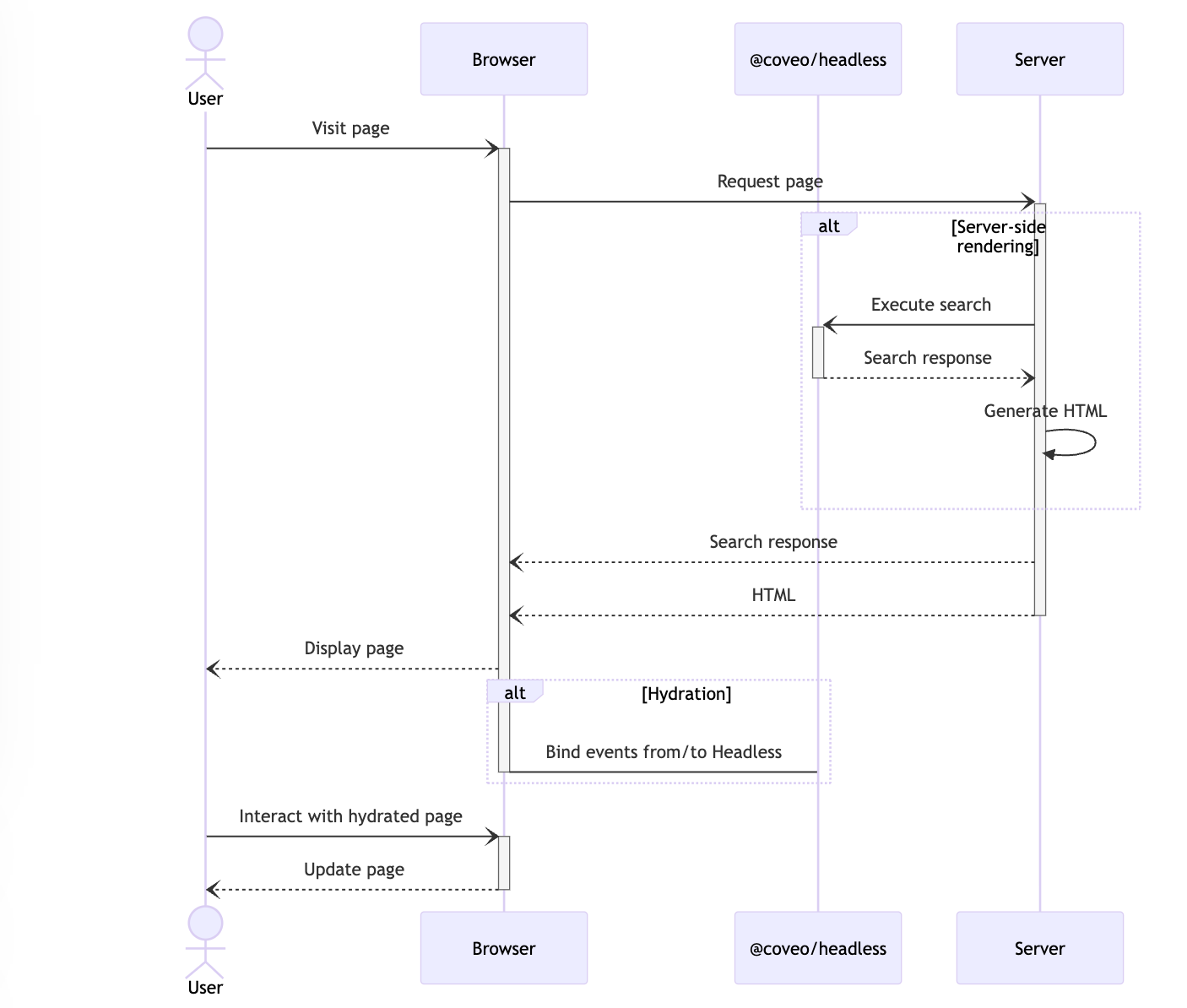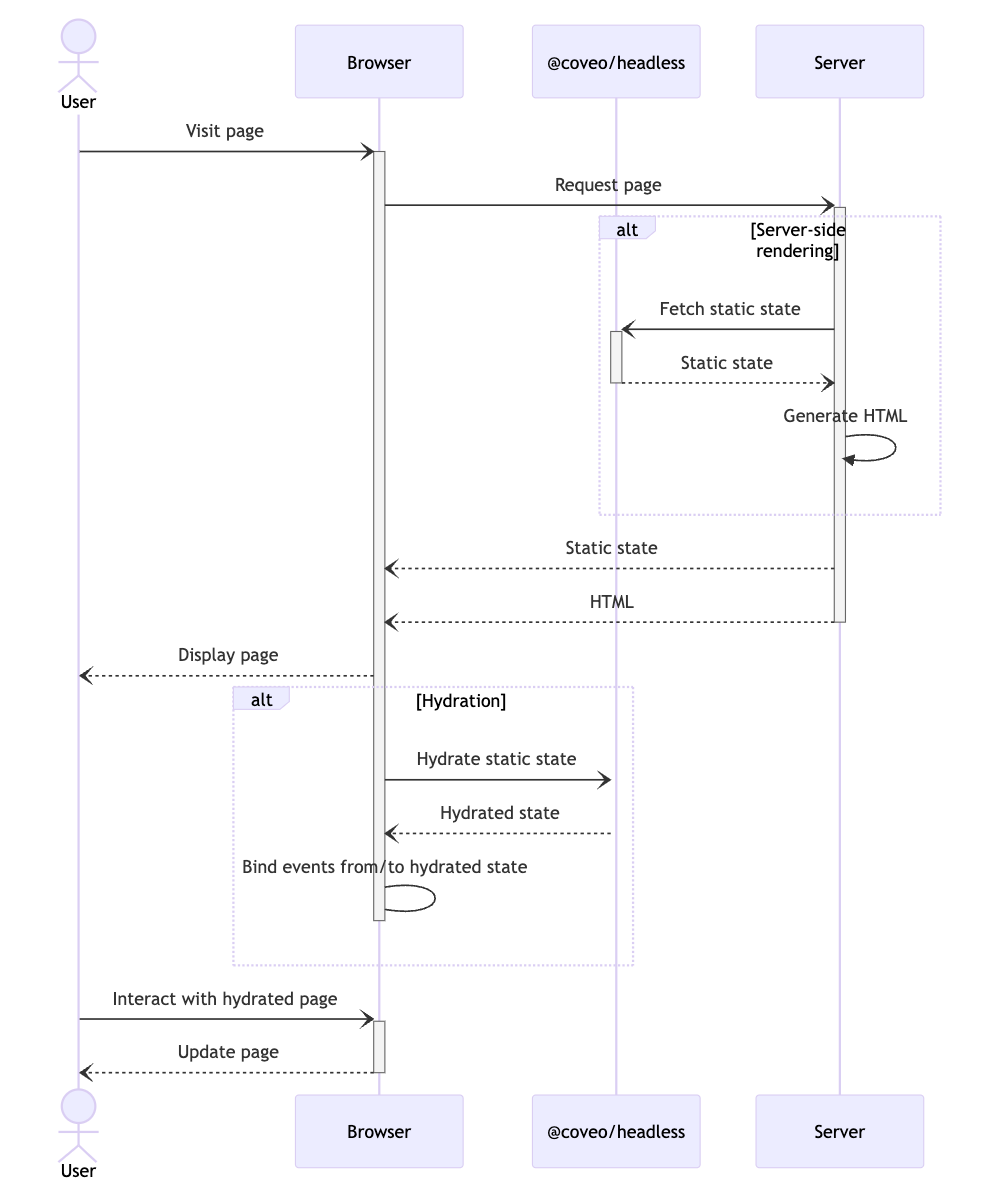Server-side rendering
Server-side rendering
Server-side rendering (SSR) is a technique that allows web applications to be rendered on the server before sending them to the client. This approach is particularly useful when developing with the Coveo Headless framework because it enables faster initial loading times and better SEO. By rendering the HTML on the server, the client can receive a fully formed page which is ready to be displayed as soon as it’s received.
The @coveo/headless-react package includes utilities for React which are compatible with Next.js in the @coveo/headless-react/ssr sub-package.
These utilities enable SSR with the Headless framework.
Prerequisites
-
You should know how to use Headless engines and controllers. You can refer to the Headless usage documentation for more information.
-
You should also be familiar with React and Next.js. Although you can read this documentation without an understanding of either framework, details which are specific to them won’t be explained.
Overview
The goal is to achieve a general structure for SSR which involves executing a search and rendering the page on the server. Then, on the client side, the page is hydrated, which means attaching interactivity and updating the page.
The following sequence diagram illustrates the general process:

Server-side rendering and hydration with Headless
The utilities for SSR use three core concepts:
-
Static state
This is the initial state of the application, which is generated on the server and sent to the client. This initial state typically contains the data that’s required for the initial render of the app without interactivity, such as the initial state of each Headless controller.
The static state is used to pre-populate (hydrate) the components with data. This lets the app load with pre-rendered content on the first request, rather than waiting for the client-side rendering to fetch and display the data.
-
Hydrated state
This is the state after it’s sent from the server to the client and then hydrated on the client side. It contains Headless controllers which you can use to interact with the state of the Headless engine. It also includes the Headless engine.
Synchronizing the state ensures that the behavior of the client-side application is consistent with what was initially rendered on the server.
-
Engine definition
The engine definition specifies the configuration of the search engine. This includes the list of controllers and their settings that should be included in the application.
It returns methods to fetch the static state of the engine and to generate the hydrated state from a given static state. The engine definition may also provide some additional utilities or helper functions that can be used in the application.
The following updated sequence diagram illustrates how SSR and hydration are implemented with Headless:

What’s next?
To implement server-side rendering in your Headless search interface, refer to the SSR usage documentation.